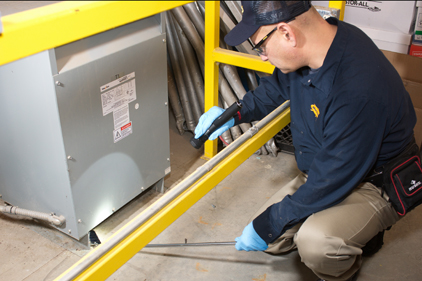Pest Proofing your Food Facility this Winter
By Jeremy Gerrard, Food Engineering Magazine
 McCloud Services is encouraging food facilities to take the right precautions, both inside and outside the building, to protect against rodents this winter. With temperatures dropping, McCloud says facilities should have an exclusion plan in place to prevent pest activity as rodent populations rise in the winter months.
McCloud Services is encouraging food facilities to take the right precautions, both inside and outside the building, to protect against rodents this winter. With temperatures dropping, McCloud says facilities should have an exclusion plan in place to prevent pest activity as rodent populations rise in the winter months.
“There are several reasons for the increase in rodent populations within commercial structures that can pose a number of threats to human health and property,” said Patricia Hottel, technical director for McCloud Services. “A hard frost or freeze will cause mice and rats to move indoors quickly, as well as harvesting of fields and crops. It’s important for facility managers to be on the lookout for signs of these destructive pests in and around their property.”
McCloud says it’s important to keep a look out for clues that rodents may be present. Some indicators of a rodent presence include trails of droppings, gnaw marks, burrows and damaged food packages.
Immediate steps food facilities can take to protect against pests include:
-
Begin with a thorough inspection of the facility inside and out. Look for points of entry around doors, poorly sealed pipes, wall junctures and roof openings.
-
Ensure doors are in good repair, including their timing mechanisms. McCloud says six seconds is a commonly time frame for doors to remain open once a pedestrian has cleared the electronic sensor.
-
Use screens to prevent pest entry if a door needs to remain open.
-
Doors should be sufficiently tight enough to seal out rodent pests.
-
Metal meshes can be used to seal holes in walls and floors where mice and rats are moving.
-
Vestibules with an inner and outer door can be helpful as a second line of defense. McCloud says quick or rapid roll up doors can separate sensitive areas like food packaging and processing from less sensitive areas.
-
Reduce conditions around the exterior of the structure which may attract rodents such as food spills, high vegetation, and poorly maintained exterior storage areas.
